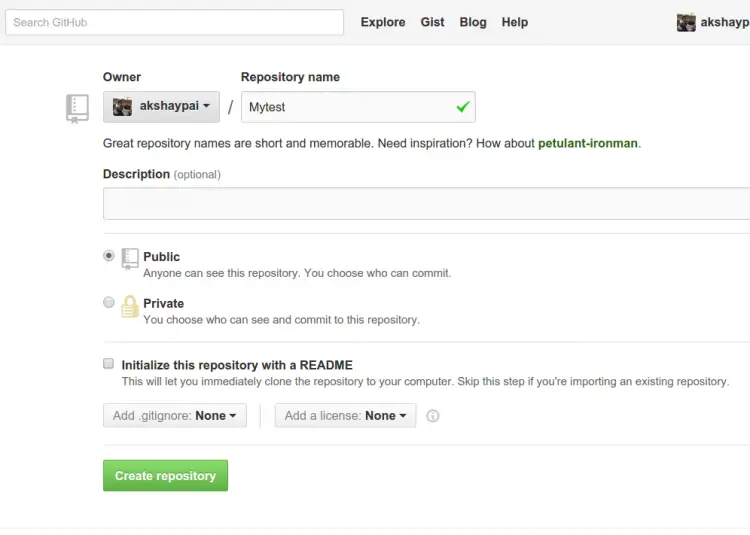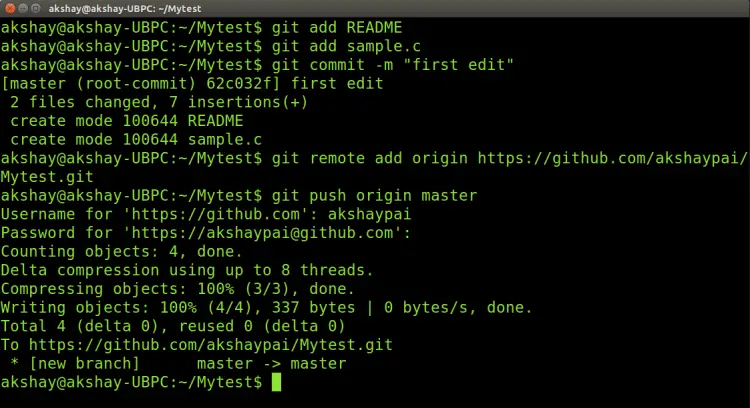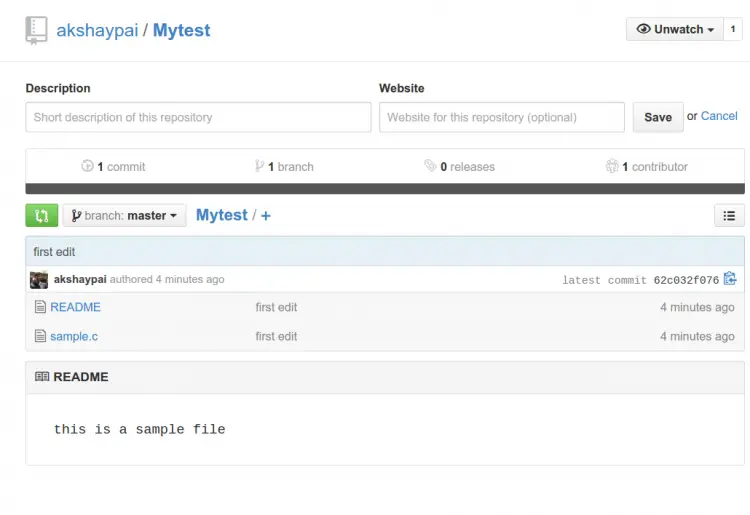GitHub is a treasure trove of some of the world’s best projects, built by the contributions of developers worldwide. This easy-to-use and compelling platform helps everyone interested in building or developing something big contribute and get recognized in the open-source community.
Git is a widely used distributed version control system in software development, particularly in Linux environments. It enables developers to track changes in their code, collaborate with others, and manage different versions of their projects. Git allows for the creation of repositories, where code and related files are stored, and it supports branching and merging, enabling developers to work on different features or fixes independently before integrating their changes. Git’s decentralized nature means that every contributor has a complete copy of the repository, ensuring that work can continue even without network access. Integrated into Linux, Git is often used via the command line, offering powerful tools for source code management, making it essential for modern software development workflows.
This tutorial is a quick setup guide for installing Git and using GitHub. It explains how to perform its various functions: creating a repository locally, connecting this repo to the remote host that contains your project (where everyone can see), committing the changes, and finally pushing all the content in the local system to GitHub.
Please note that this tutorial assumes you have a basic knowledge of the terms used in Git, such as push, pull requests, commit, repository, etc. It also requires you to register to GitHub here and make a note of your GitHub username. So, let’s begin:
1 Installing Git for Linux
Download and install Git for Linux:
sudo apt install git
The above command is for Ubuntu and works on all Recent Ubuntu versions, tested from Ubuntu 20.04 to Ubuntu 24.04, and it’s likely to work the same way on future versions.
2 Configuring GitHub
Once the installation has successfully completed, the next thing to do is to set up the configuration details of the GitHub user. To do this use the following two commands by replacing “user_name” with your GitHub username and replacing “email_id” with your email-id you used to create your GitHub account.
git config --global user.name "user_name"
git config --global user.email "email_id"
The following image shows an example of my configuration with my “user_name” being “akshaypai” and my “email_id” being “[email protected]”

3 Creating a local repository
Create a folder on your system. This will serve as a local repository which will later be pushed onto the GitHub website. Use the following command:
git init Mytest
If the repository is created successfully, then you will get the following line:
Initialized empty Git repository in /home/akshay/Mytest/.git/
This line may vary depending on your system.
So here, Mytest is the folder that is created and “init” makes the folder a GitHub repository. Change the directory to this newly created folder:
cd Mytest
4 Create a README file to describe the repository
Now create a README file and enter some text like “this is a git setup on Linux”. The README file is generally used to describe what the repository contains or what the project is all about. Example:
gedit README
You can use any other text editors. I use gedit. The content of the README file will be:
This is a git repo
5 Adding repository files to an index
This is an important step. Here we add everything that need to be pushed onto the website into an index. These things might be the text files or programs that you might add for the first time into the repository or it could be adding a file that already exists but with some changes (a newer version/updated version).
Here we already have the README file. So, let’s create another file that contains a simple C program and call it sample.c. The contents of it will be:
#include<stdio.h>
int main()
{
printf("hello world");
return 0;
}
So, now that we have 2 files
README and sample.c
add it to the index by using the following 2 commands:
git add README
git add sample.c
Note that the “git add” command can be used to add any number of files and folders to the index. Here, when I say index, what I am referring to is a buffer like space that stores the files/folders that have to be added into the Git repository.
6 Committing changes made to the index
Once all the files are added, we can commit it. This means that we have finalized what additions and/or changes have to be made and they are now ready to be uploaded to our repository. Use the command :
git commit -m "some_message"
“some_message” in the above command can be any simple message like “my first commit” or “edit in readme”, etc.
7 Creating a repository on GitHub
Create a repository on GitHub. Notice that the name of the repository should be the same as the repository’s on the local system. In this case, it will be “Mytest”. To do this login to your account on Then click on the “plus(+)” symbol at the top right corner of the page and select “create new repository”. Fill the details as shown in the image below and click on “create repository” button.

Once this is created, we can push the contents of the local repository onto the GitHub repository in your profile. Connect to the repository on GitHub using the command:
Important Note: Make sure you replace ‘user_name’ and ‘Mytest’ in the path with your Github username and folder before running the command!
git remote add origin https://github.com/user_name/Mytest.git
8 Pushing files from a local repository to a GitHub repository
The final step is to push the local repository contents into the remote host repository (GitHub), by using the command:
git push origin master
Enter the login credentials [user_name and password].
The following image shows the procedure from step 5 to step 8

So this adds all the contents of the ‘Mytest’ folder (my local repository) to GitHub. For subsequent projects or for creating repositories, you can start off with step 3 directly. Finally, if you log in to your GitHub account and click on your Mytest repository, you can see that the 2 files README and sample.c have been uploaded and are visible to all as shown in the following image.

Frequently Asked Questions
How can I check if Git is installed correctly?
After installation, you can verify Git is installed by typing:
git --version
in the terminal. This will display the installed version of Git.
How do I configure Git with my username and email?
Configure your Git username and email using the commands:
git config --global user.name "Your Name"
git config --global user.email "[email protected]"
Replace “Your Name” and “[email protected]” with your personal details.
What are the basic Git commands I should know?
The most frequently used GIT commands are:
- git init: Initializes a new Git repository.
- git clone [URL]: Clones a repository from a remote source.
- git add [file]: Adds files to the staging area.
- git commit -m “[commit message]”: Commits your changes with a message.
- git push: Pushes your changes to the remote repository.
- git pull: Pulls updates from the remote repository.
How do I create a new repository on GitHub?
Go to GitHub, log in, and click on the “+” icon at the top-right corner. Then select “New repository.” Fill out the repository details and click “Create repository.”
How can I push my local repository to GitHub?
First, add the remote repository using:
git remote add origin [repository URL]
Then, push your code with:
git push -u origin master
(for the first push) or
git push
(for subsequent pushes).
What should I do if I get a ‘permission denied’ error when pushing to GitHub?
This error usually occurs when SSH keys are not set up correctly. Generate an SSH key with:
ssh-keygen
and add it to your GitHub account under “Settings” -> “SSH and GPG keys“.
How do I pull changes from a GitHub repository?
Use git pull to fetch and merge changes from the remote repository to your local repository.
What is a .gitignore file and how do I use it?
A .gitignore file specifies intentionally untracked files that Git should ignore. Add filenames or patterns to this file to exclude them from being tracked.
How can I resolve merge conflicts in Git?
When a merge conflict occurs, manually edit the files to resolve the conflicts, then use:
git add [file]
to mark them as resolved and commit the changes.
How to organize development with multiple Developers
The branch feature in GIT can organize commits and development when multiple developers work on the same project. See this guide on how to create branches in GIT.













